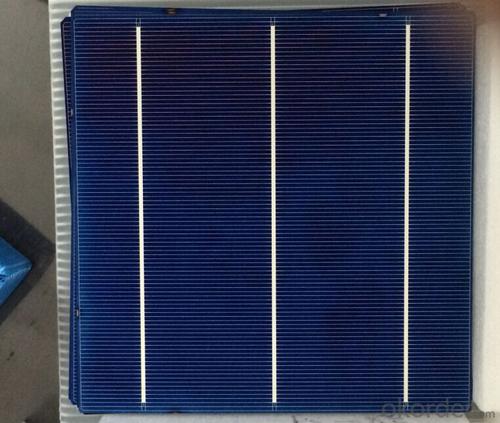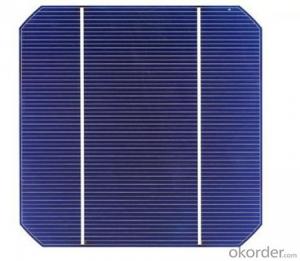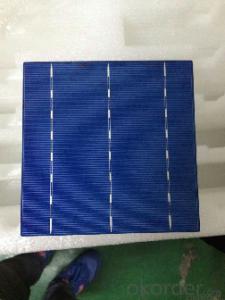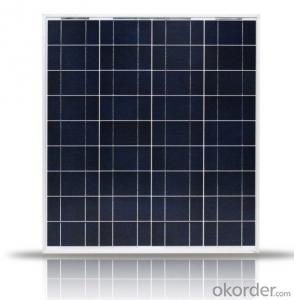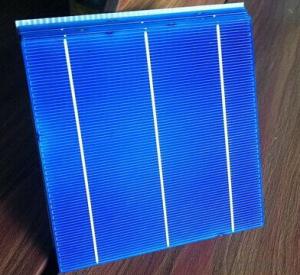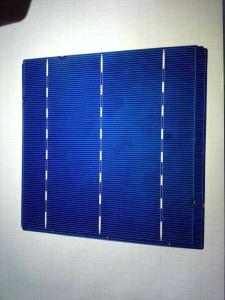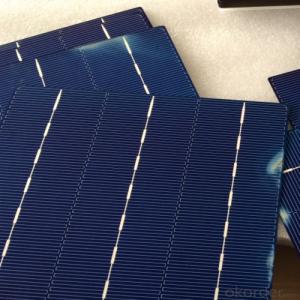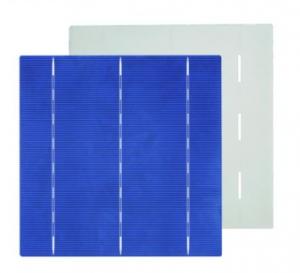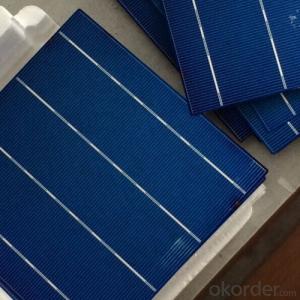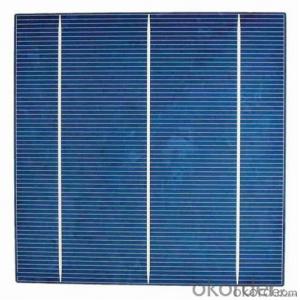Screen Printed Solar Cells - Poly 3BB with Lower Price AB Grade
- Loading Port:
- Shanghai
- Payment Terms:
- TT or LC
- Min Order Qty:
- 30000 pc
- Supply Capability:
- 1000000 pc/month
OKorder Service Pledge
OKorder Financial Service
You Might Also Like
Electrical Characteristic
Efficiency (%) | Pmpp (W) | Umpp (V) | Impp (A) | Uoc (V) | Isc (A) | FF (%) |
17.25 | 4.197 | 0.524 | 7.992 | 0.62 | 8.458 | 80.03% |
17 | 4.137 | 0.524 | 7.876 | 0.619 | 8.353 | 80.01% |
16.75 | 4.076 | 0.522 | 7.81 | 0.617 | 8.286 | 79.73% |
16.5 | 4.015 | 0.518 | 7.746 | 0.613 | 8.215 | 79.73 |
16.25 | 3.955 | 0.515 | 7.683 | 0.61 | 8.144 | 79.61% |
16 | 3.894 | 0.512 | 7.613 | 0.608 | 8.075 | 79.31% |
15.75 | 3.833 | 0.51 | 7.534 | 0.605 | 8.058 | 78.62% |
15.5 | 3.772 | 0.508 | 7.453 | 0.604 | 8.02 | 77.87% |
15.25 | 3.771 | 0.505 | 7.35 | 0.604 | 9.997 | 76.83% |
15 | 3.65 | 0.503 | 7.271 | 0.604 | 7.989 | 75.64% |
14.5 | 3.529 | 0.499 | 7.067 | 0.604 | 7.988 | 73.14% |
14 | 3.407 | 0.499 | 6.833 | 0.604 | 7.833 | 72.01% |
Intensity Dependence
Intensity [W/m2] | Isc× [mA] | Voc× [mV] |
1000 | 1.00 | 1.000 |
900 | 0.90 | 0.989 |
500 | 0.50 | 0.963 |
300 | 0.30 | 0.939 |
200 | 0.20 | 0.920 |
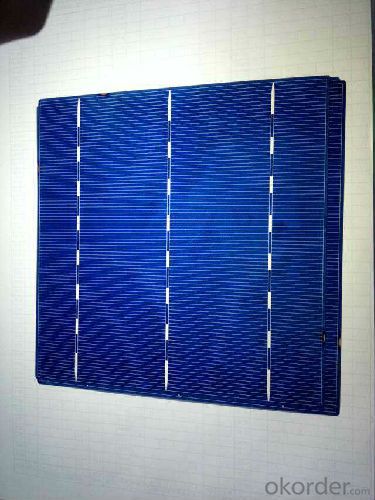
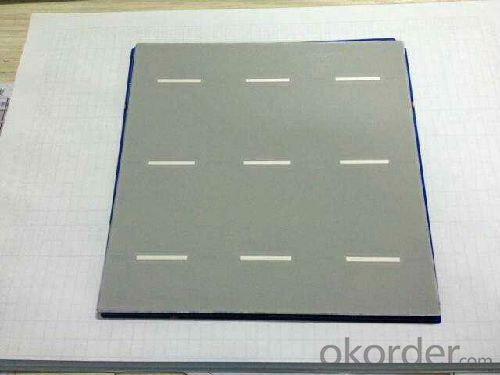
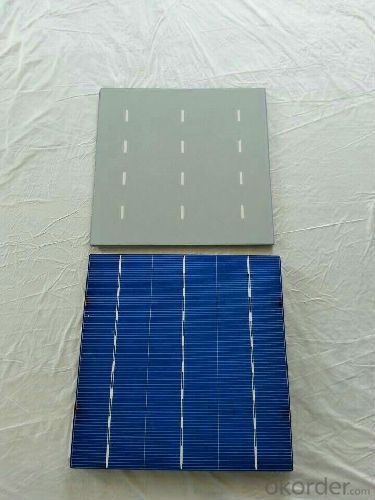
Advantage Of Poly Solar Cell 156mm
1: High quality cell, Level A cell (14%—17.5%)
2.Dimensione:156*156mm Diagonal:200mm
3: Qualified certification: TUV,CE certification.
4: Warranty: five years for whole unit
Photovoltaic cells are made of special materials called semiconductors such as silicon, which is currently used most commonly. Basically, when light strikes the cell, a certain portion of it is absorbed within the semiconductor material. This means that the energy of the absorbed light is transferred to the semiconductor. The energy knocks electrons loose, allowing them to flow freely. The third generation of solar cells includes a number of thin-film technologies often described as emerging photovoltaics—most of them have not yet been commercially applied and are still in the research or development phase. Many use organic materials, often organometallic compounds as well as inorganic substances. Despite the fact that their efficiencies had been low and the stability of the absorber material was often too short for commercial applications, there is a lot of research invested into these technologies as they promise to achieve the goal of producing low-cost, high-efficiency solar cells.
- Q: What is a monocrystalline solar cell?
- A monocrystalline solar cell is a type of solar panel that is made from a single crystal structure, typically silicon. It is known for its high efficiency and sleek, black appearance. The single crystal structure allows for better electron flow, resulting in greater energy conversion from sunlight into electricity.
- Q: What are the maintenance requirements for solar cells?
- The maintenance requirements for solar cells typically include regular cleaning to remove dust and dirt that can reduce their efficiency, as well as occasional inspections to check for any damage or malfunctioning components. Additionally, it is important to ensure that the surrounding vegetation or structures do not shade the solar panels, as this can also affect their performance. Overall, solar cells have minimal maintenance requirements compared to other forms of energy generation.
- Q: How many years should I spend in the solar cell industry to be a good solar cells sales person?
- Experience matter, but not the years. As long as you are learning the solar cells knowledge everyday, you can be a good solar cells sales in just one year.
- Q: Can solar cells be used in railway applications?
- Yes, solar cells can be used in railway applications. They can be used to power various systems such as lighting, signaling, and communication equipment along railway tracks. Solar cells are reliable, cost-effective, and environmentally friendly, making them a suitable renewable energy solution for railway infrastructure.
- Q: How do solar cells perform in different temperature ranges?
- Solar cells generally perform better in cooler temperatures. When the temperature increases, the efficiency of solar cells tends to decrease. This is because higher temperatures can lead to an increase in electron-hole recombination, reducing the electrical output. However, some advanced solar cell technologies, like multi-junction cells, can maintain higher efficiency even at elevated temperatures. Overall, it is important to consider temperature effects when designing and using solar cells.
- Q: Can solar cells be used in public charging stations for electric vehicles?
- Yes, solar cells can be used in public charging stations for electric vehicles. By harnessing solar energy, these charging stations can provide clean and renewable power to charge electric vehicles, reducing reliance on traditional grid electricity and contributing to a more sustainable transportation system.
- Q: How does the solar panel produce it yourself?
- ?Step 5: Assemble the battery Place the titled titanium dioxide film face up on the table, drop one or two drops of electrolyte containing iodine and iodide ions on the membrane, and then press the conductive surface of the counter electrode down on the titanium dioxide film The The two pieces of glass were slightly staggered so as to use the exposed portions as the electrodes for testing. Use two clips to hold the battery, so that your solar cell is made
- Q: How do solar cells handle electromagnetic radiation?
- Solar cells are designed to handle electromagnetic radiation by converting it into usable electrical energy. The materials within the solar cells absorb photons from the sunlight, which in turn generates an electric current. This process effectively harnesses the energy from the electromagnetic radiation and allows solar cells to produce clean and renewable electricity.
- Q: Can solar cells be used on boats?
- Yes, solar cells can be used on boats. They are a popular and sustainable source of energy for powering various systems on boats, including lighting, navigation equipment, and charging batteries. Solar panels can be easily installed on the deck or roof of a boat to harness sunlight and convert it into electricity, reducing the reliance on traditional fuel sources and offering a clean and renewable energy solution.
- Q: Can solar cells be used in off-grid cabins or cottages?
- Yes, solar cells can definitely be used in off-grid cabins or cottages. Solar panels can generate electricity by converting sunlight into usable energy, which can then be stored in batteries for later use. This makes them an excellent choice for powering remote locations like off-grid cabins or cottages where access to the electrical grid may be limited or non-existent.
Send your message to us
Screen Printed Solar Cells - Poly 3BB with Lower Price AB Grade
- Loading Port:
- Shanghai
- Payment Terms:
- TT or LC
- Min Order Qty:
- 30000 pc
- Supply Capability:
- 1000000 pc/month
OKorder Service Pledge
OKorder Financial Service
Similar products
Hot products
Hot Searches
Related keywords



